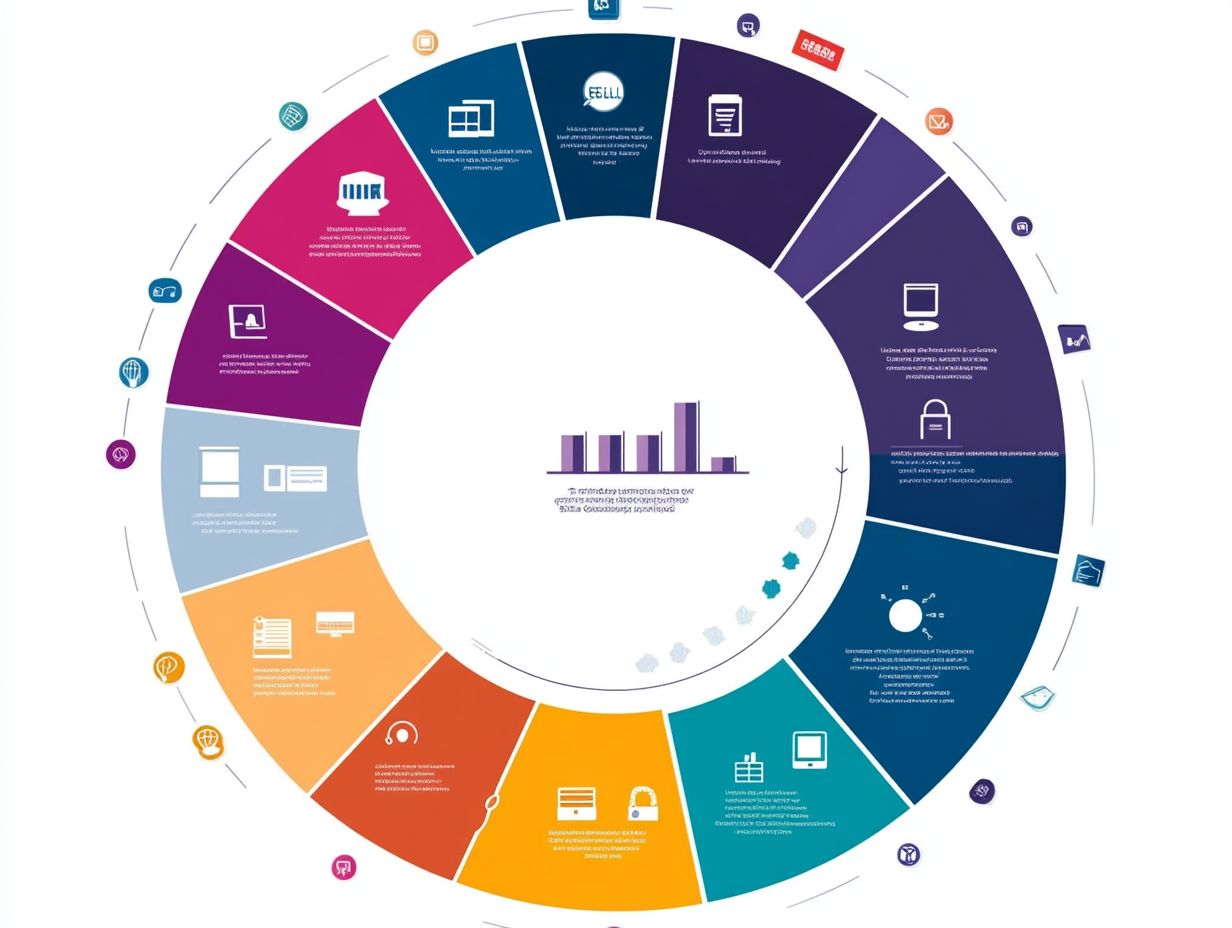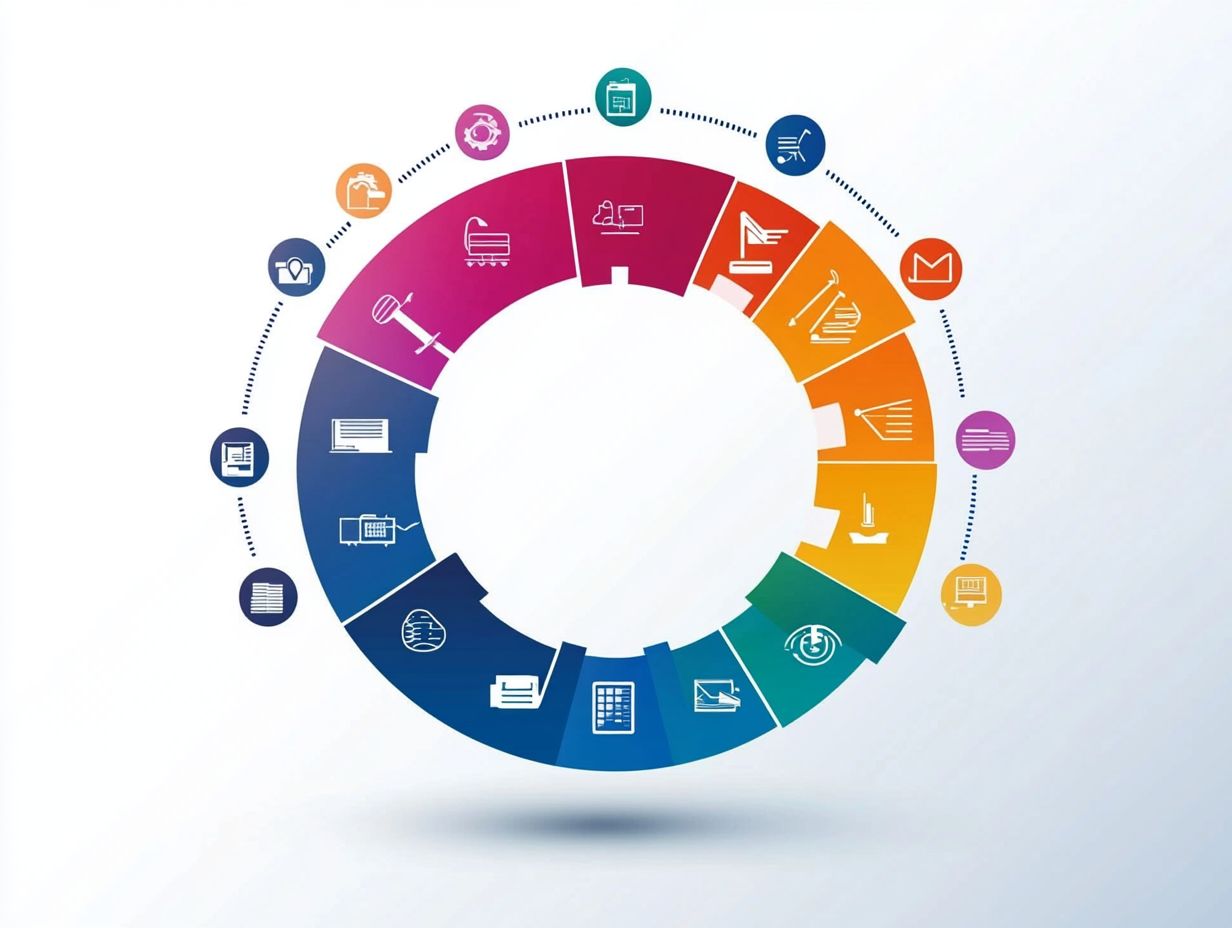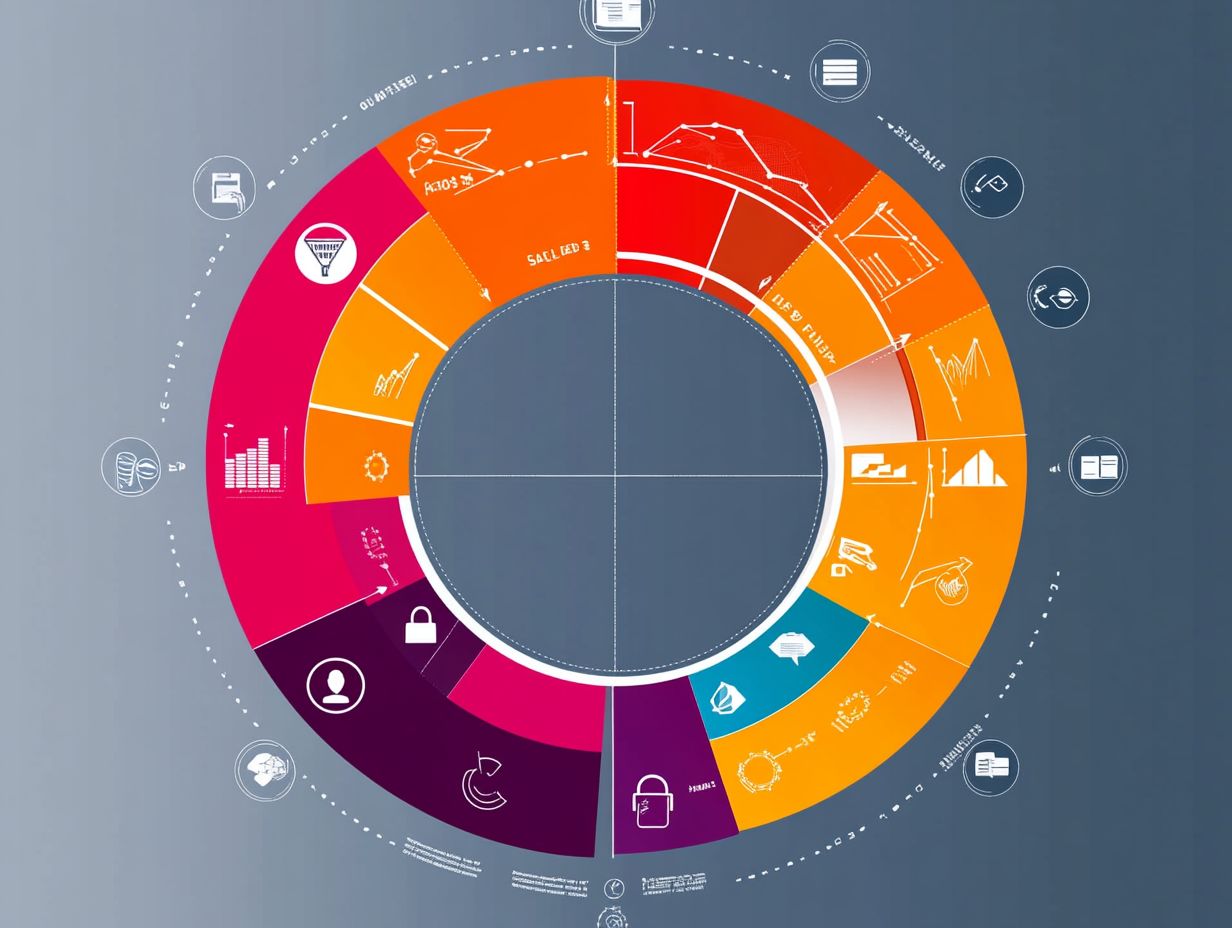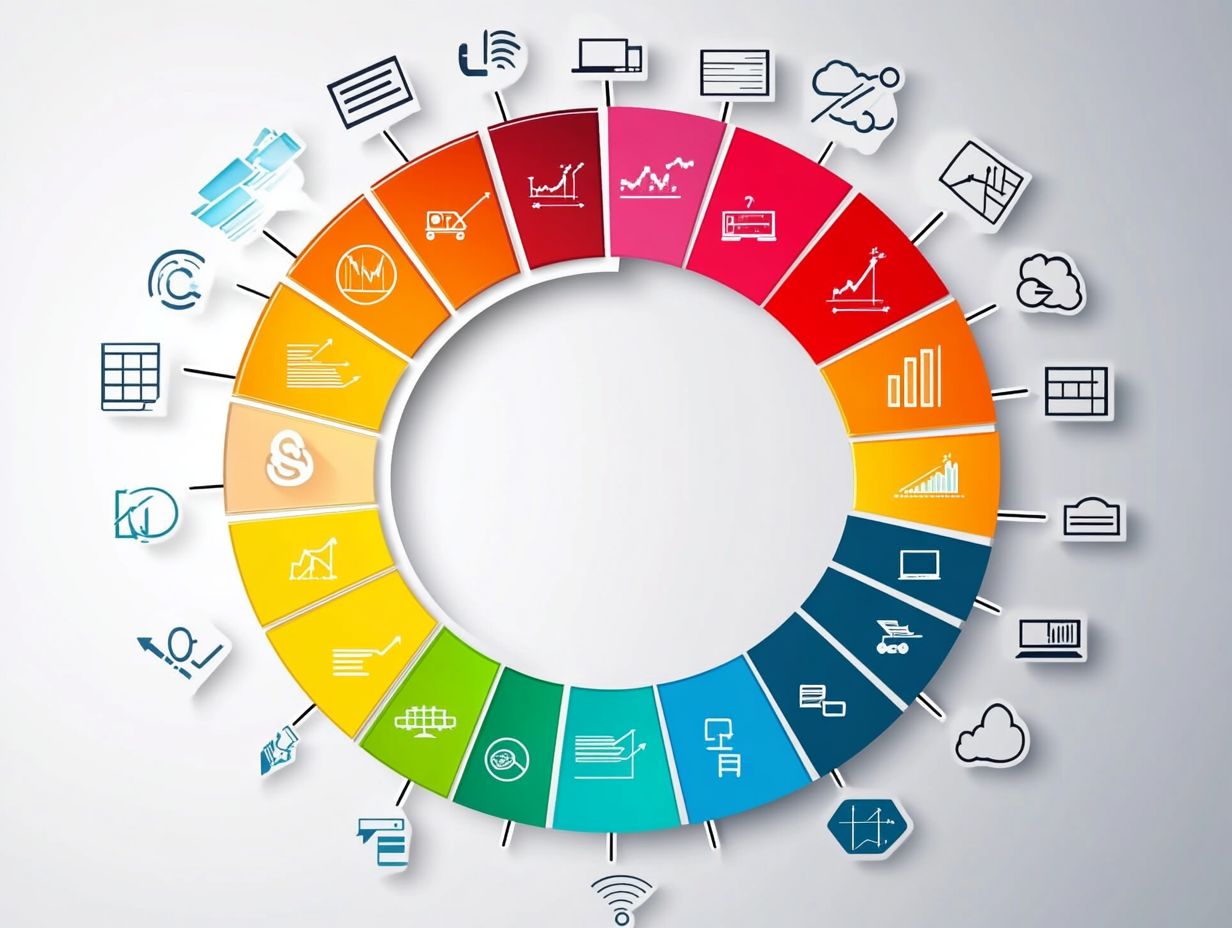Understanding the B2B Sales Cycle
Let's Set Up Your Lead Generation Strategy
Fill out the form below, and our team will get in touch with you to create a tailored solution for your business.
In the fast-paced realm of business-to-business (B2B) sales, navigating the sales cycle presents both challenges and exciting opportunities, especially when considering the complexities of the buying process.
This guide meticulously outlines the essential stages of the B2B sales process, guiding you from prospecting and lead generation all the way to closing the deal, using proven sales strategies to enhance your customer acquisition efforts.
This guide includes key metrics for measuring success, such as sales metrics and lead scoring techniques, as well as methods for continuous improvement that will be thoroughly explored.
Whether you re new to B2B sales or seeking to refine your approach, this guide is designed to equip you with the insights needed to thrive.
Contents
- Key Takeaways:
- What is B2B Sales?
- Stages of the B2B Sales Cycle
- Let's Set Up Your Lead Generation Strategy
- Key Strategies for Each Stage
- Let's Set Up Your Lead Generation Strategy
- Let's Set Up Your Lead Generation Strategy
- Measuring and Improving B2B Sales Performance
- Frequently Asked Questions
- Let's Set Up Your Lead Generation Strategy
Key Takeaways:

- B2B sales involves selling products or services to other businesses, rather than individual consumers.
- The B2B sales cycle consists of stages such as prospecting, qualifying leads, presenting solutions, and closing the deal. Effective prospecting and thorough qualification are essential for achieving sales success.
- Compelling sales pitches and successful negotiation are crucial for thriving in the B2B market.
What is B2B Sales?
B2B sales, or Business-to-Business sales, is the intricate art of selling products or services from one company to another. This process often involves a complex sales cycle, guiding you through various stages such as lead generation, qualification, and ultimately closing deals.
It s crucial to grasp the nuances of the customer journey, nurture those vital relationships, and deliver compelling value propositions that cater specifically to the unique needs of your business clients. This is crucial for SaaS solutions, where dedicated sales teams work tirelessly to elevate customer satisfaction and influence purchasing decisions.
Stages of the B2B Sales Cycle
The B2B sales cycle unfolds as a careful process, comprising several distinct stages from lead generation to deal closure. Each of these stages plays a vital role in cultivating robust customer relationships and achieving successful sales outcomes.
By grasping these phases, including the critical qualification stage and the art of delivering a compelling sales pitch, you can refine your strategies. This understanding gives you the power to leverage digital channels effectively and monitor key sales metrics, ultimately enhancing your overall sales performance.
Prospecting and Lead Generation
Prospecting and lead generation are essential cornerstones in your B2B sales process. They revolve around identifying and attracting potential customers who might be interested in your products or services, leveraging various digital channels to optimize your outreach and engagement.
When done effectively, prospecting boosts the number of sales opportunities and significantly enhances your chances of transforming leads into long-lasting customer relationships.
To achieve these goals, consider utilizing tools like Customer Relationship Management (CRM) systems, social media platforms, and email marketing software. These resources can streamline your efforts and sharpen your targeting accuracy.
Understanding the marketing funnel is equally important. It involves nurturing leads at every stage with tailored engagement strategies, ensuring potential customers receive relevant content that resonates with their needs. This could range from informative blogs and engaging webinars to personalized newsletters that showcase solutions and foster interaction.
How do you engage potential customers effectively? By doing so, you build trust and increase the likelihood of conversion.
Qualifying Leads
Qualifying leads is an essential phase in your B2B sales journey, where you assess which leads have the potential to transform into valuable customers. By employing criteria like lead scoring ranking leads based on their likelihood to convert you can prioritize your efforts and resources more effectively.
Let's Set Up Your Lead Generation Strategy
Fill out the form below, and our team will get in touch with you to create a tailored solution for your business.
Identifying internal advocates and skillfully navigating gatekeepers will streamline your approach. This allows you to engage directly with decision-makers and significantly enhance your chances of closing deals.
You ll evaluate factors like demographic attributes, engagement levels, and behavioral tendencies to assign numeric values to each lead. Techniques like BANT (Budget, Authority, Need, Timeline) or CHAMP (Challenges, Authority, Money, Prioritization) frameworks prove invaluable in pinpointing which prospects are most likely to convert.
Tackling gatekeeping challenges necessitates a keen understanding of the internal dynamics within potential clients. Building relationships with internal advocates is crucial for success. These individuals can open doors that might otherwise remain shut, making it easier to present solutions that align with the organization s needs and objectives.
Presenting Solutions and Negotiating

Effectively presenting solutions and negotiating with potential clients are crucial elements of the B2B sales cycle. You need a well-crafted sales pitch that directly addresses the specific needs and pain points of the customer while clearly demonstrating the value of your solutions.
By mastering negotiation strategies and objection-handling techniques, you can significantly enhance your chances of achieving favorable outcomes and ensuring customer success.
To truly connect with prospects, listen actively and ask insightful questions that reveal their core objectives. This approach allows you to tailor your strategy, crafting a customized narrative that showcases the benefits of your products or services while highlighting how they align with the client s strategic goals.
Building a genuine connection fosters trust. This makes it much easier to navigate challenging negotiations. When you address objections with empathy and a solutions-focused mindset, you can transform potential roadblocks into opportunities, ultimately paving the way for long-term partnerships.
Closing the Deal
Closing the deal marks the pinnacle of the B2B sales process, where your effective communication and strategic sales techniques come together to secure that all-important agreement with the client. By utilizing sales automation tools, you can streamline this process, ensuring timely follow-ups and boosting your overall efficiency.
In today s fast-paced business landscape, establishing trust and understanding your clients needs is essential for success. Listen actively and adapt your approach to address any concerns, fostering a collaborative atmosphere that invites open dialogue and enhances relationship building.
Integrating sales automation into your workflow enables you to track interactions, schedule reminders for follow-ups, and manage leads with greater precision. This minimizes the risk of missed opportunities and allows you to concentrate on nurturing relationships and tailoring proposals to meet specific client needs.
Leveraging analytics equips you with valuable insights into client behaviors and preferences, enabling you to refine your strategies and close deals more effectively.
Key Strategies for Each Stage
Implementing key strategies at every stage of the B2B sales cycle is crucial for optimizing your performance and achieving successful outcomes. Tailored sales strategies and effective communication can profoundly influence your ability to connect with customers and navigate the sales process seamlessly.
Utilizing sales enablement tools empowers your teams by providing them with the insights and resources they need to excel in their endeavors.
Effective Prospecting Techniques
Effective prospecting techniques form the bedrock of successful B2B sales. They allow you to leverage various digital channels to connect with potential customers. By employing effective communication and engagement strategies, you can foster interest and create valuable sales opportunities. The objective is to forge meaningful connections that pave the way for deeper conversations.
Let's Set Up Your Lead Generation Strategy
Fill out the form below, and our team will get in touch with you to create a tailored solution for your business.
Cold calling can be a potent tool in your arsenal when approached with clear objectives and personalized pitches that resonate with your target audience’s needs. Your email outreach should focus on crafting compelling messages that capture attention and deliver genuine value, often by incorporating insights tailored specifically to the recipient s industry or challenges.
In addition to traditional methods, social selling has become a vital component of modern prospecting. Utilizing platforms like LinkedIn allows you to establish credibility and engage with prospects through relevant content. By effectively combining these techniques, you can elevate your prospecting efforts and significantly boost your conversion rates.
Qualifying Criteria and Methods
Setting clear qualifying criteria and methods can supercharge your sales efforts during the qualification phase of the B2B sales cycle. This approach enables you to systematically and efficiently assess the potential of your leads.
By utilizing lead scoring systems a way to rate how interested a potential customer is and analyzing relevant sales metrics, you can significantly enhance the quality of customer relationships and improve your conversion rates.
- Engagement level
- Company size
- Industry relevance
Incorporating various criteria allows you to prioritize your efforts and allocate resources more strategically. Effective lead scoring quantifies a lead’s readiness to purchase and helps you tailor your communication strategies to meet their specific needs.
Sales metrics provide actionable insights that help you track performance over time. Beyond simple qualification, nurturing relationships with these qualified leads is essential. It fosters trust and positions you and your sales team as reliable partners in their decision-making journey.
Creating a Compelling Sales Pitch

Crafting a compelling sales pitch is essential for capturing your potential customer’s interest. It conveys the unique value propositions of your offerings while addressing the specific needs of the client, ultimately enhancing your chances of success in sales. Mastering effective sales techniques, including objection handling addressing potential concerns from clients can further amplify the impact of your pitch.
To achieve this, it s vital for you to understand your customer s success goals. This insight enables you to tailor your approach and clearly demonstrate how your product or service aligns with those objectives. By articulating these value propositions in a relatable manner, you foster engagement and build trust.
Refining your pitch through feedback from colleagues or mentors can significantly enhance its clarity and effectiveness. Employing techniques for handling objections allows you to address concerns proactively, transforming potential barriers into opportunities for meaningful dialogue. This multifaceted strategy reinforces the merits of your offer and cultivates a deeper connection with your prospects.
Ready to boost your sales? Start implementing these prospecting techniques today!
Negotiation Strategies for Success
Effective negotiation strategies are key to closing deals successfully. This phase requires a balance of assertiveness and flexibility.
As you navigate client concerns, aim for a mutually beneficial agreement. Mastering communication builds trust and enhances the overall sales experience.
To ensure a successful outcome, prepare for each negotiation by researching the other party’s needs and preferences. Understanding customer needs allows you to craft custom responses that resonate with their specific requirements.
Addressing objections effectively is crucial; it showcases your empathy and willingness to work together. By maintaining open lines of communication, you cultivate a sense of partnership and encourage a deeper connection, ultimately leading to a stronger, more enduring relationship.
Let's Set Up Your Lead Generation Strategy
Fill out the form below, and our team will get in touch with you to create a tailored solution for your business.
Building rapport is more than just a nicety; it helps ease tension and creates an environment where both parties feel comfortable sharing their perspectives openly.
Measuring and Improving B2B Sales Performance
Measuring and improving B2B sales performance is crucial for driving growth and securing long-term success. Use sales metrics and insights to identify key areas for improvement and strategically enhance your processes.
Embrace continuous improvement practices, especially with sales automation tools. These tools streamline operations and elevate customer success.
Key Metrics to Track
- Conversion rates: Highlight how well you nurture leads and reflect the effectiveness of your engagement techniques.
- Average deal size: Reveals the profitability potential of your deals.
- Sales cycle length: Helps you pinpoint bottlenecks that may be hindering performance.
- Customer retention rates: Crucial for understanding the longevity of client relationships and identifying valuable upselling opportunities.
In today’s competitive landscape, relying on accurate, real-time data gives you the power to adjust your strategies dynamically, ensuring you meet both your short-term goals and long-term objectives.
Continuous Improvement Techniques
Implementing continuous improvement techniques within your B2B sales process is essential for cultivating a culture of excellence and driving customer success. These practices promote ongoing analysis, adaptation, and refinement of your sales strategies.
By adopting this proactive approach, your sales teams remain agile, responding effectively to market changes and evolving customer needs.
Integrate structured feedback loops to gain invaluable insights into your selling tactics and market conditions, helping you pinpoint areas that need enhancement. Investing in training opportunities equips your sales professionals with essential skills and immerses them in a culture of continuous learning.
Complement these efforts with thorough data analysis to uncover patterns and trends that inform your decision-making, leading to improved sales effectiveness. This cohesive framework boosts your sales team’s performance and enhances customer satisfaction by ensuring that client interactions are tailored and relevant.
Frequently Asked Questions

What is the B2B Sales Cycle?
The B2B Sales Cycle is the process that a business-to-business (B2B) company goes through to acquire new customers and generate revenue. It involves a series of steps and interactions between a business and its potential customers.
What are the stages of the B2B Sales Cycle?
The B2B Sales Cycle typically has four main stages: finding potential customers, needs assessment, presenting, and closing. Each stage requires unique strategies to guide the customer toward making a purchase.
How long does the B2B Sales Cycle typically last?
The duration of the B2B Sales Cycle varies by industry, product complexity, and sale size. On average, it can take anywhere from 3 to 18 months to complete.
What factors influence the B2B Sales Cycle?
Many factors can affect the B2B Sales Cycle, including market conditions, competition, customer needs, budget, decision-making processes, and the relationship between buyer and seller.
Why is it important to understand the B2B Sales Cycle?
Understanding the B2B Sales Cycle is key to your company s success. It reveals customer behavior and helps you identify potential roadblocks to develop effective sales strategies.
Let's Set Up Your Lead Generation Strategy
Fill out the form below, and our team will get in touch with you to create a tailored solution for your business.
What are some tips to improve the B2B Sales Cycle?
Act now to improve your B2B Sales Cycle! Identify your target audience and create personalized messaging. Leverage technology and data, nurture leads, and regularly evaluate your sales process.






